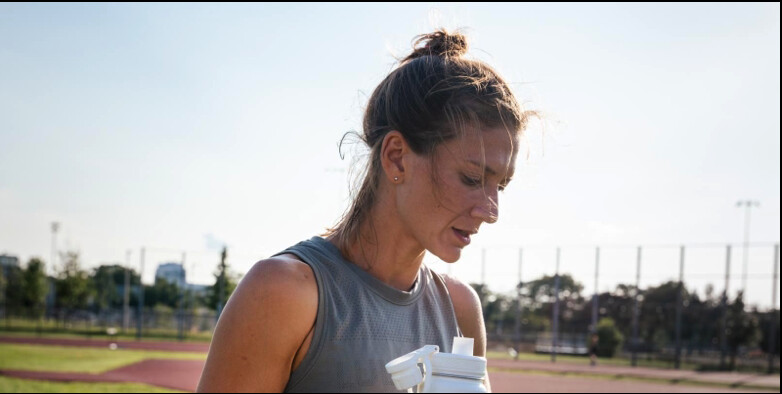Running News Daily
Running News Daily is edited by Bob Anderson. Send your news items to bob@mybestruns.com Advertising opportunities available. Train the Kenyan Way at KATA Kenya and Portugal owned and operated by Bob Anderson. Be sure to catch our movie A Long Run the movie KATA Running Camps and KATA Potato Farms - 31 now open in Kenya! https://kata.ke/
Index to Daily Posts · Sign Up For Updates · Run The World Feed
Instead of braving the elements, take these precautions for a happy and healthy Summer Run Streak
Designed to keep you running through sweaty and busy summer days, the run streak bridges the gap between Memorial Day and July 4. Run at least one mile per day, every day. That’s 36 consecutive days of running.
Find out how a streak can change you, and share your journey with us! Where will you run? How will you make it happen? How will your life change? We want to hear about it! Share your progress and motivate other streakers by “liking” the streak on Facebook. You can also share updates on Twitter and Instagram using the hashtag #RWRunStreak.

Whether you’re starting a new marathon training block or participating in the Runner’s World Run Streak, the summer is a perfect time to get back into running. Longer days, vacation time, and good weather mean more time to get the miles in. But beware—there are simple mistakes that can cause you to burn out (or literally burn yourself to a crisp) before fall marathon season comes around.
Avoid the following mistakes during summer training, including hydration hijinx and shoe snafus. Above all else, keep one thing in mind—your goal is to make it through the Run Streak healthy, happy, and hungry for more.
Mistake #1: Not acclimating to the heat.
In every aspect of training, there’s an adjustment period. Just like you wouldn’t jump from 20 miles per week to 60, or skip from 10 squats to 100 in just a couple of sessions, you shouldn’t dive headfirst into the summer heat.
There are a few different options to build up your heat tolerance. First, you can briefly lower your mileage so you’re not overloading your body and gradually work it back up as you readjust. Or, you can go back and forth between treadmill days and outside running days. Lastly, start your training cycle by running during the coolest part of the day, then each following day, run later and later until you’ve comfortably run during the hottest hours.
Get used to one variable at a time. Don’t try to build your mileage too high when acclimating to the weather. Handle one problem first, then solve the next one. Otherwise, you might end up physically and mentally drained.
Mistake #2: Not checking the weather.
I live in Philadelphia, where the summer temperatures can range from mid-70s to the high 90s. As someone who likes to run after work, that means I need to check the weather, or I might be in for an unpleasant surprise.
But even if you’re a morning runner, it helps to look at a weather report before heading out the door. You might find that the morning dew point is unbearably high for your workout, or that a summer rainstorm will roll through and cool the air down significantly by the afternoon.
In my case, I look ahead of time whether I need to get up a little earlier to squeeze my run in the cool morning instead of slogging through blistering temps—which can potentially be dangerous.
Mistake #3: Not hydrating or refueling.
Katie Kissane, R.D., C.S.S.D. told Runner’s World in a previous article that dehydration heightens the risk of heatstroke and causes muscle cramping when you’re running in hot weather. Therefore, to stay safe in the heat, make sure you’re drinking water throughout the day.
If you’re out for a long run, hydrate during the activity. Stash a bottle somewhere on the route, plan your route around water fountains, or even wear a hydration pack—just make sure to drink up.
However, Kissane explains that just chugging water alone could lead to a separate problem called hyponatremia—low sodium levels in the blood. Hyponatremia leads to dizziness, fatigue, and nausea. Consider bringing a sports drink high in minerals like sodium, calcium, potassium, and magnesium to prevent the symptoms from hampering your run and hurting you in the long term.
Mistake #4: Not wearing sunscreen.
No matter how long your run is, you’re exposing yourself to ultraviolet radiation from the sun. Without precaution, you can suffer from skin aging, eye damage, and even skin cancer, according to the Environmental Protection Agency.
“Americans can reduce risks from sun exposure with continued use of sun protection measures including broad-spectrum sunscreen with SPF values of at least 15,” said acting United States Federal Drug Association (FDA) Commissioner Janet Woodcock, M.D., in a press release from September 2021.
The FDA recommends applying sunscreen 15 minutes before sun exposure and reapplying every two hours, especially when sweating. That means if you’re going for a long run, you might need to stop to reapply. There are sunscreens out there specifically made to be sweat-resistant, so you don’t need to reapply as often, but it’s still good to be safe.
Mistake #5: Not being flexible—and dreading the treadmill.
“On especially hot and humid days, there’s no glory in the Strava post,” says Runner’s World Runner-in-Chief Jeff Dengate. “I’ve had a 15-miler on the schedule that I’ve broken up into three five-mile runs that day, so I still get in the mileage without dying. Don’t be confined by the training plan—sometimes you need to modify it.”
That might even mean running on the treadmill when it’s particularly rough outside. Before you shake your head in disgust, think of it as an opportunity to control all the variables. You can listen to your favorite music or watch a television show, lock into a pace, and enjoy sweet, sweet air conditioning.
Mistake #6: Not wearing summer running gear.
There are a few pieces of gear you should always have around for hot and sunny summer runs.
A good running hat protects your face from the sun. Most are made of moisture-wicking materials to keep your head cool, and some even come with UV protection. Bonus points are that a running hat keeps raindrops out of your eyes on any wet days.
A hat alone won’t keep the sun out of your eyes. You need a pair of sunglasses. While most pairs will work in a pinch, there are great running sunglasses that won’t slip off your sweaty face or bounce up and down from the impact of your stride.
For particularly scalding afternoons, you could purchase a cooling vest—but think of that as more of a luxury than a necessity.
Mistake #7: Ignoring swollen feet.
When you get sized for a new shoe at a local running store, they typically recommend a half-size up because “blood flow increases to deliver oxygen to the muscles,” Paul Langer, DPM, told Runner’s World. “The volume of the muscles temporarily expands.”
When it’s really hot out, Test Editor Morgan Petruny notices that her feet swell even more: “I have to be aware of giving myself more room in my shoes… I often think that I’m a fall, winter, or spring shoe size W9, but a summer size W9.5.”
If you’re not ready to buy another shoe, she recommends loosening your laces, wearing thinner socks, and avoiding the shoes in your repertoire with a tight toe-box.
by Runner’s World
Login to leave a comment




